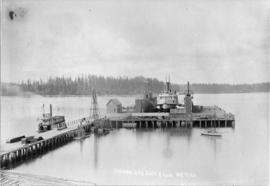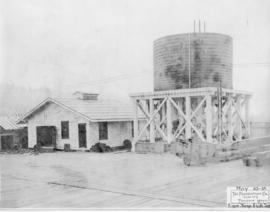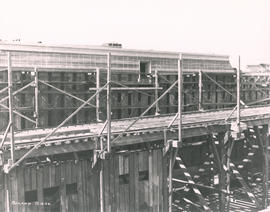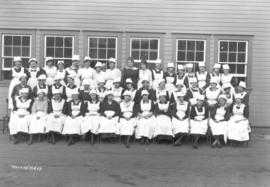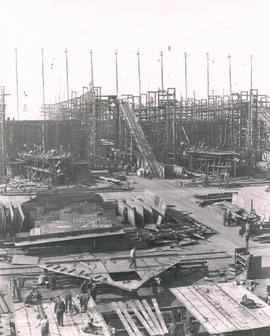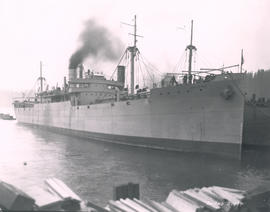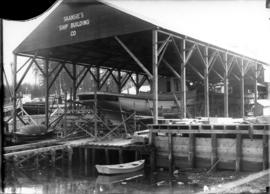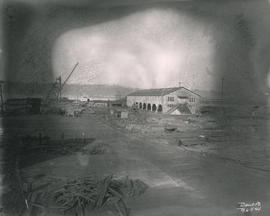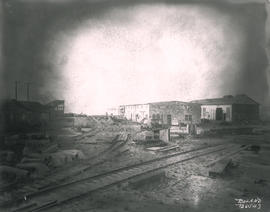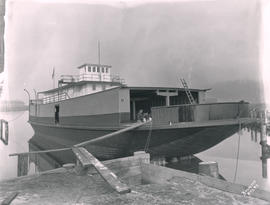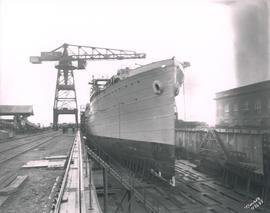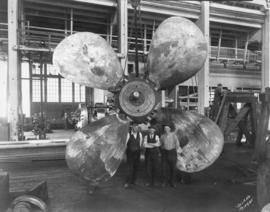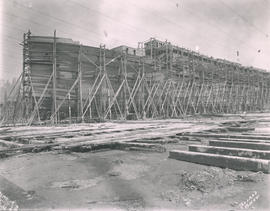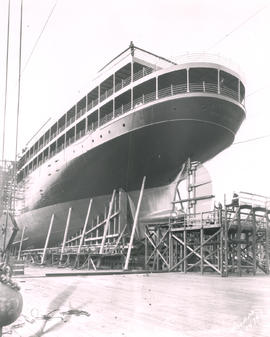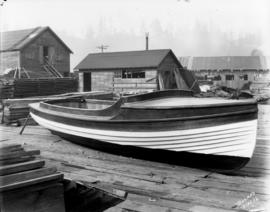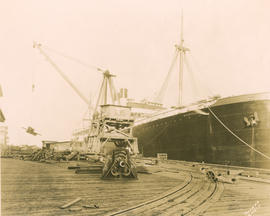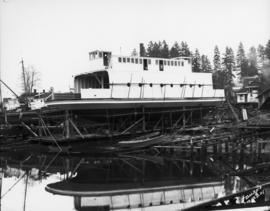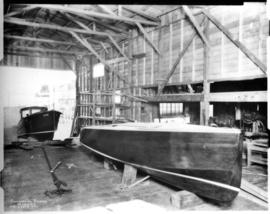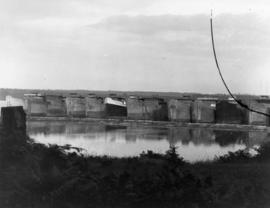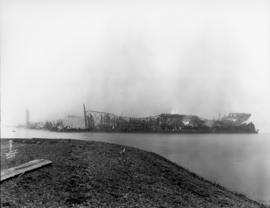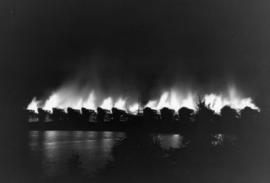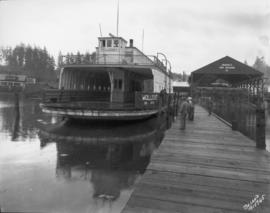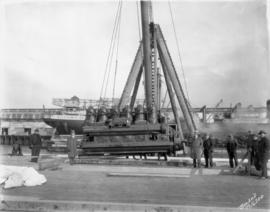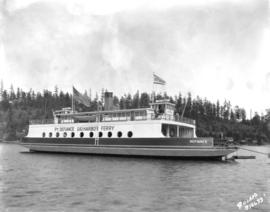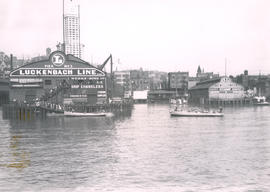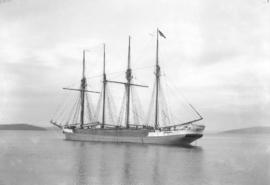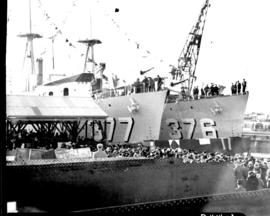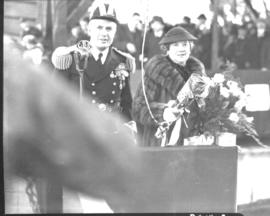Medusa on the ways. The USS Medusa, a $4,000,000 repair ship for the Pacific fleet, is pictured prior to launching at the Bremerton Navy Yard in April of 1923. The "Medusa," the first ship of her kind to be built on the Pacific coast, had a displacement of 10,000 tons. Her launching was rather unusual, as she did not not slide down the ways into water as normal but instead, water was poured into the construction dock where she was built. When floated, she was towed to her new berth and the dock emptied. She was 483-feet, 9 inches long and resembled a huge ocean liner except for the small guns mounted on her. The USS Medusa was launched on April 16, 1923, with Mrs. Burns Poe of Tacoma acting as sponsor. G37.1-121 (TNT 4-4-23, p. 17; TDL 4-7-23, p. 1-article; TDL 4-17-23, p. 1-article)
Boat & ship industry--Bremerton--1920-1930; Launchings--Bremerton--1920-1930;
